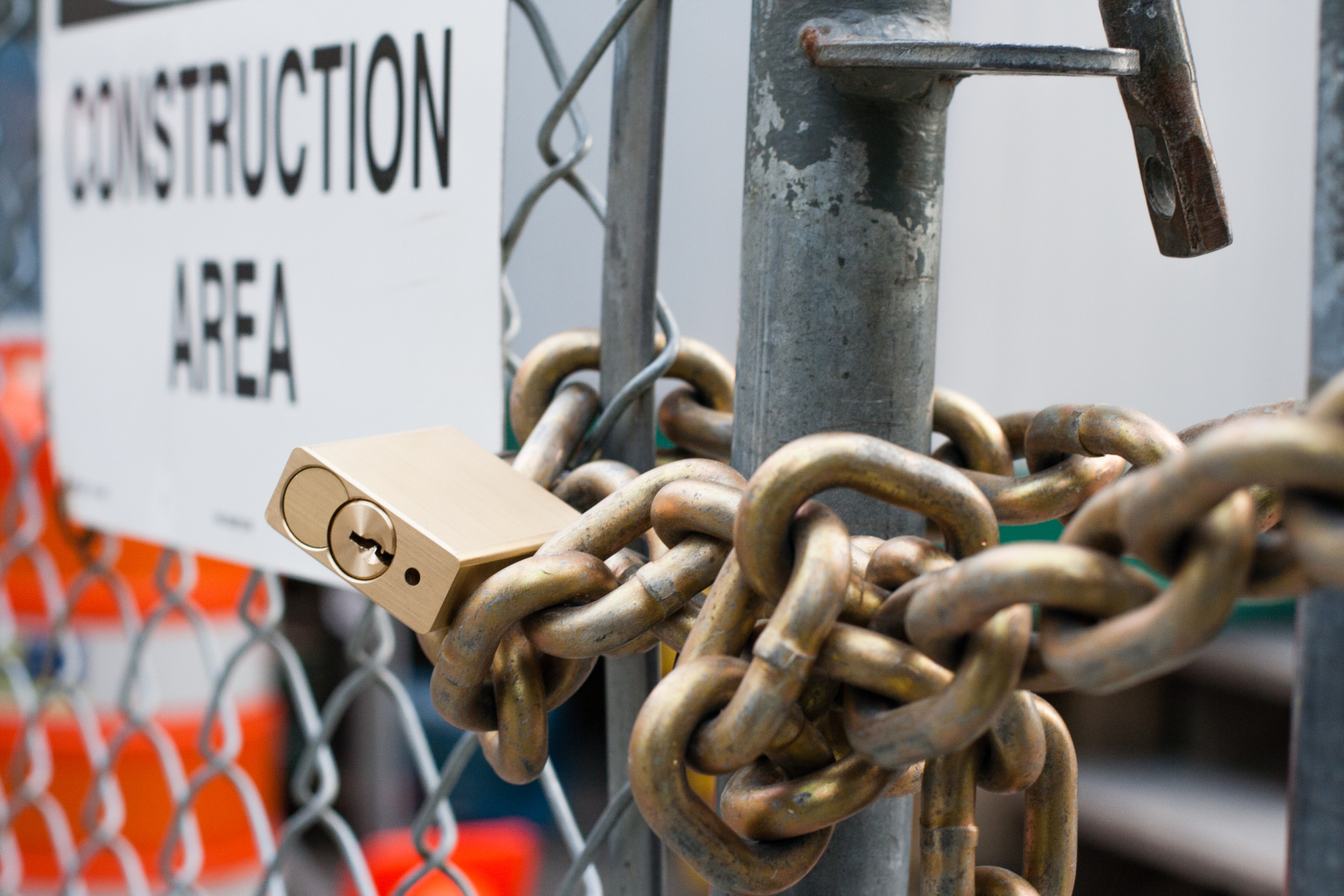
With many in the construction industry getting planning a well-deserved break over Christmas and New Year, it will soon be time to wind down and close up the sites.
However, while you may want to use the holiday season to relax and recharge the batteries, it’s worth remembering that, while you’re away, there’s always a risk that something could go wrong on site. Theft, arson, unwanted visitors, bad weather and public safety issues all have the potential to disrupt the festivities or bring nasty surprises in the New Year.
Like everything in life, it’s far better to carry out some work which helps to prevent such problems than have to deal with the consequences. Making a ‘site shut down’ plan is a great way to do just that. Most main contractors will issue their own shut down checklist which has to be actioned but, in case you haven’t got one to work with, here are some of the top things to do and look out for.
1. Walk the entire perimeter of the site to check that fencing/hoarding is strong and secure with no areas showing weakness or damage. Where necessary, use weights/bracing to prevent fencing/hoarding blowing over in the event of windy conditions. Check gates and locks at all entrance points and be sure to make whatever repairs are necessary.
2. Ensure you also have clear signage around the perimeter, warning the public to ‘keep out’ and informing them of potential hazards.
3. Ensure any materials, tools and equipment which will be left on site are stored away (or at the very least hidden from view) and be especially careful to remove highly valuable items from the site or place them in secure storage. Double check containers, office and welfare facilities on the last day, ensuring they are empty of personnel and that all windows and doors are locked.
4. To reduce the risk of fire/arson, keep skips away from both the site perimeter and buildings. Remove any waste or flammable materials before shutdown. Think carefully about fuel storage too, checking that valves/discharge nozzles on diesel tanks are padlocked and placing LPG cylinders outside buildings in a securely padlocked container.
5. Assess the site for anything that could be affected by bad weather. To prevent problems occurring during strong wind, make sure materials are secured; check all temporary structures are stable and strong (e.g. scaffolding); and securely store or brace roof trusses. Take precautions against cold weather too – for instance lagging cold water pipes, isolating power supplies and keeping office heating on minimum to prevent freezing.
6. Remove plant from the site wherever possible. Plant left on site should be immobilised and safely parked with the cab locked. With the exception of aircraft warning lights, isolate and lock off power supplies to tower cranes and hoists etc.
7. All excavations should be backfilled or securely guarded at the edges with rigid barriers.
8. Remove ladders and access to scaffolding or platforms. Ensure sheeting/ netting is securely attached, remove any loose boards/materials on or within scaffolding structures and make sure loading bays/ tower gates are locked shut.
9. If your site has any high-risk areas in terms of security, consider deploying CCTV, alarms or patrols.
10. Make a plan for who will respond in the event of an emergency. You might want to display their contact details at the site itself and also give them to close neighbours.
We believe that, by following this checklist, construction site managers should be able to enjoy a worry-free break. Do let us know if you have any other tips by commenting over on our Facebook and LinkedIn pages.
14.12.2020
Feature image: 1Roman Makedonsky/Shutterstock.com








